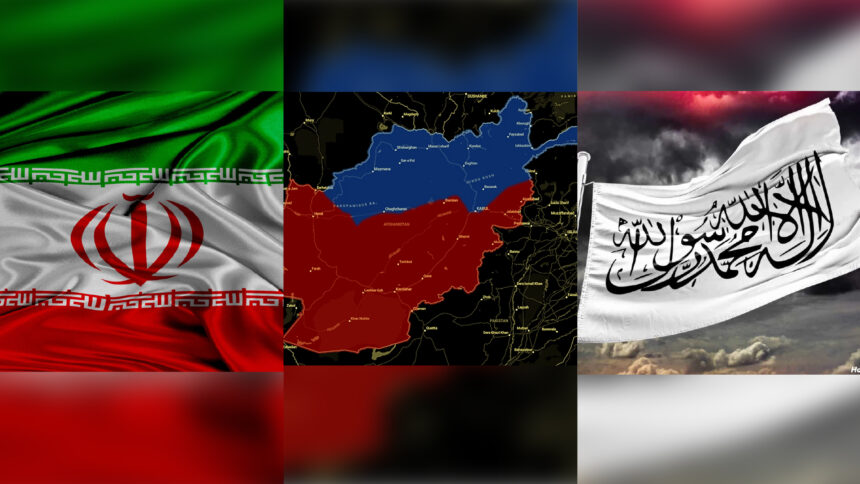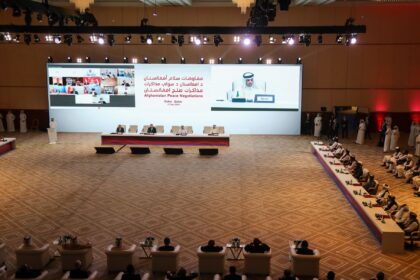The Hidden Hand Behind the Dismantling of the Northern Alliance and the Return of the Taliban
By: Abdul Muqit Aryanfar
Introduction
The Islamic Republic of Iran’s policy toward Afghanistan particularly at pivotal historical junctures has consistently prioritized geopolitical interests and regional opportunism over ideological or ethical principles. Despite its public antagonism toward the United States, available evidence demonstrates that Tehran has, at critical moments including during the 2001 Bonn Conference acted in tacit alignment with Washington to reengineer Afghanistan’s political landscape. This article offers a critical examination of Iran’s role in sidelining the Northern Alliance and facilitating the Taliban’s resurgence as a dominant power, despite Tehran’s earlier portrayal of the group as an existential threat.
Part I: The Rise of the Northern Alliance and Shifting Geopolitical Dynamics in the 1980s
During the 1980s, key figures of the future Northern Alliance such as Ahmad Shah Massoud and Professor Burhanuddin Rabbani led the armed resistance against Soviet occupation. In this period, the United States, Saudi Arabia, and China provided financial and logistical support, while Pakistan played the operational role of housing refugees and hosting militant camps. Training camps in Peshawar, Quetta, and other Pakistani territories produced thousands of Afghanistani fighters.
However, following the Soviet withdrawal and the collapse of the Najibullah regime, internal rivalries splintered the mujahideen coalition. From this vacuum emerged the Taliban a movement initially ignored by the United States and openly backed by Pakistan and Saudi Arabia. It was the Northern Alliance, composed of Tajiks, Uzbeks, and Hazaras, that mounted the last significant military resistance to the Taliban’s rapid territorial expansion.
Part II: The 2001 Bonn Conference and the Systematic Marginalization of the Northern Alliance
The Bonn Conference in December 2001 convened by international actors including the U.S., the UN, Germany, and Iran was intended to lay the groundwork for a post-Taliban transitional government. Despite having militarily defeated the Taliban, the Northern Alliance found itself politically sidelined during the conference, with Tehran its former patron actively collaborating with the United States to limit its share of power. Mohammad Javad Zarif, then Deputy Foreign Minister of Iran, played a pivotal role in persuading the Northern Alliance to relinquish political leadership in favor of Hamid Karzai, a figure with little domestic political base but strong Western backing. This political maneuver marked one of the clearest instances of informal Iranian-American cooperation in reshaping Afghanistan’s post-war governance undermining key mujahideen figures such as Rabbani, Fahim, and Dostum.
Part III: Iran’s Strategic Calculations Behind the Alliance with the West
Iran’s involvement in sidelining the Northern Alliance despite its rhetorical anti-Americanism was driven by a set of strategic calculations:
Neutralizing Politically Independent Jihadi Leaders: Veterans of the jihad era, like Rabbani and Dostum, were viewed as too autonomous and ideologically unmanageable.
Promoting More Controllable Civilian Figures: Western-friendly technocrats were perceived as easier to influence. Curtailing Pakistan’s Influence: Iran aimed to limit Islamabad’s leverage in post-Taliban Afghanistan without fully empowering its traditional allies. Positioning Iran as a Rational Regional Mediator: Tehran sought international legitimacy by presenting itself as a constructive and pragmatic stakeholder.
Part IV: Iran’s Policy Reversal and Strategic Rapprochement with the Taliban
As NATO’s military presence deepened in Afghanistan, Iran’s policy shifted markedly. From around 2010 onwards, Tehran began cultivating ties with the Taliban a group it had previously denounced as sectarian extremists and agents of Saudi-Pakistani hegemony. This shift included hosting Taliban delegations in Tehran, facilitating intra-Afghanistan dialogue, and allegedly offering clandestine support to the group’s military wings. As the central government in Kabul grew increasingly aligned with the West, Iran began to view the Taliban not as enemies but as strategic counterweights to both U.S. military influence and Pashtun-dominated state institutions.
By the time Kabul fell in August 2021, Iran had not only normalized its relations with the Taliban but had emerged as one of the first countries to resume diplomatic and security engagements with the de facto regime despite its continued repression of minorities and women.
Part V: Strategic and Historical Repercussions
Iran’s duplicitous strategy of simultaneously undermining its traditional allies and enabling the return of its former adversaries has had far-reaching consequences for Afghanistan’s internal cohesion:
National Unity Eroded: The empowerment of hardline Sunni factions and sidelining of Tajik, Uzbek, and Hazara actors exacerbated ethnic and sectarian divisions. Regional Distrust Intensified: Iran’s double-dealing, alongside Pakistan’s interventions, has bred deep public skepticism toward all neighboring powers. Democratic Moderates Marginalized: The removal of politically moderate, nationalist figures has left space for radical, unaccountable actors to dominate governance.
Conclusion: Strategic Opportunism Disguised as Diplomacy
The events of the Bonn Conference and the two decades that followed reveal a harsh reality: Iran, far from resisting American imperialism, has at times actively collaborated with it to shape Afghanistan’s political architecture particularly when such cooperation advanced Tehran’s regional influence. The betrayal of the Northern Alliance, and the subsequent embrace of the Taliban, represents not merely a diplomatic about-face but a deliberate strategic calculus that has weakened Afghanistan’s pluralism and deepened its instability. In the name of pragmatism, Iran has helped empower the very forces it once condemned, leaving a fractured nation to grapple with the consequences.






